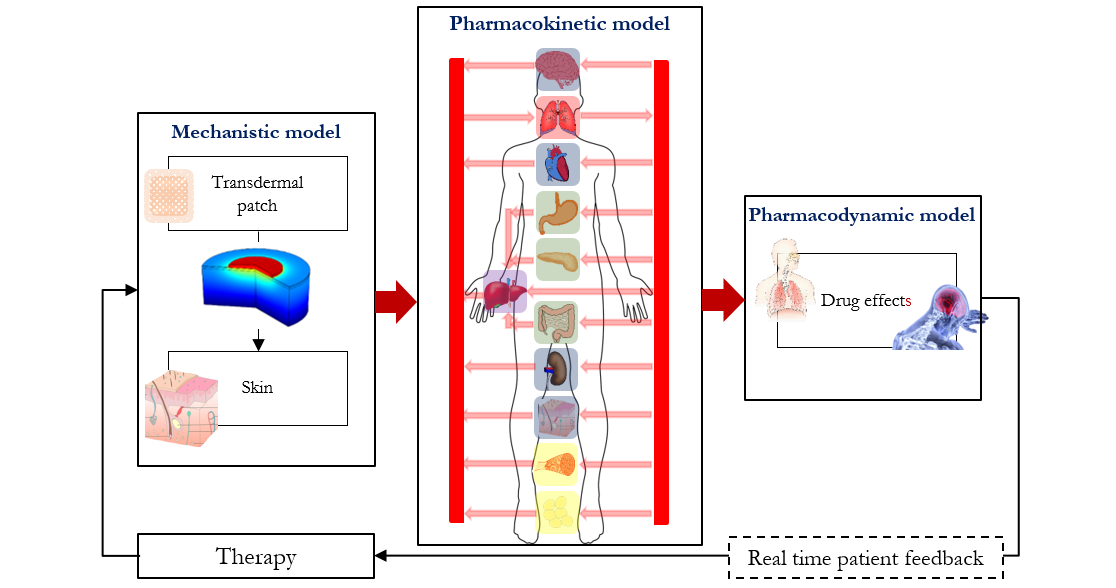Virtual twinning for intelligent, personalized transdermal drug delivery

Type. FreeNovation and OPO Foundation project
Funding. This PhD project is funded by the Novartis Research Foundation, OPO Foundation, Margrit-Weisheit Foundation, Parrotia Foundation, and Empa (internal).
Duration. 5 years (2018-2023).
Collaborations. This project is a collaboration between different Empa labs of the Department of Materials Meet Life.
Contact. Thijs Defraeye (principal investigator).
Staff. Milena Cukic Radenkovic (Scientist), Flora Bahrami (PhD student), Lu Ding (Master student EPFL, 2019)
Project background
Transdermal drug delivery (TDD) is a non-invasive technology that is currently used to (self-) administer drugs in lower doses. A main hurdle with TDD is controlling the percutaneous drug absorption since the delivery pathway – the human skin – is very patient specific. The absorption kinetics depend on the patient’s skin composition, metabolism and lifestyle. Instead of “one-size-fits-all”, we aim at designing future TDD devices that deal with specific patients (genotypes and phenotypes). We propose an innovative way to make TDD device control more intelligent by creating a virtual twin of the TDD patch and patient’s skin. This virtual twin predicts the physical processes occurring during drug release and absorption. This information is used to steer the TDD process and to tailor it to the patient.
Publications.
Čukić, M. and Galovic, S., 2023. Mathematical modeling of anomalous diffusive behavior in transdermal drug-delivery including time-delayed flux concept. Chaos, Solitons & Fractals, 172, p.113584. DOI
Bahrami, F., Rossi, R.M., De Nys, K. and Defraeye, T., 2023. An individualized digital twin of a patient for transdermal fentanyl therapy for chronic pain management. Drug delivery and translational research, pp.1-14. DOI
Defraeye T., Bahrami F., Ding L., Malini R.I., Terrier A., Rossi R.M. (2020), Predicting transdermal fentanyl delivery using mechanistic simulations for tailored therapy, Frontiers in Pharmacology (11) 585393. DOI
Defraeye T., Bahrami F., Rossi R.M. (2021), Inverse mechanistic modeling of transdermal drug delivery for fast identification of optimal model parameters, Frontiers in Pharmacology 12, 1-15, 641111 DOI
Bahrami, F., Rossi, R.M. and Defraeye, T., (2022). Predicting transdermal fentanyl delivery using physics-based simulations for tailored therapy based on the age. Drug Delivery, 29(1), pp.950-969. DOI
Funding agency:
This work was supported by the Novartis Research Foundation, OPO Foundation, Margrit-Weisheit Foundation, and Parrotia Foundation
SDGs:
Staff:
PhD student
Scientist and Project Leader:
Milena Cukic Radenkovic
Master student
Lu Ding
